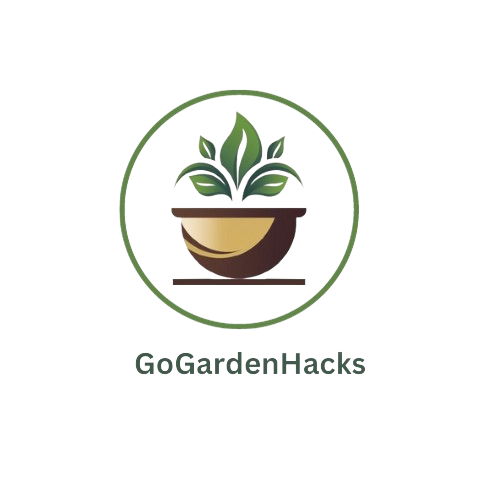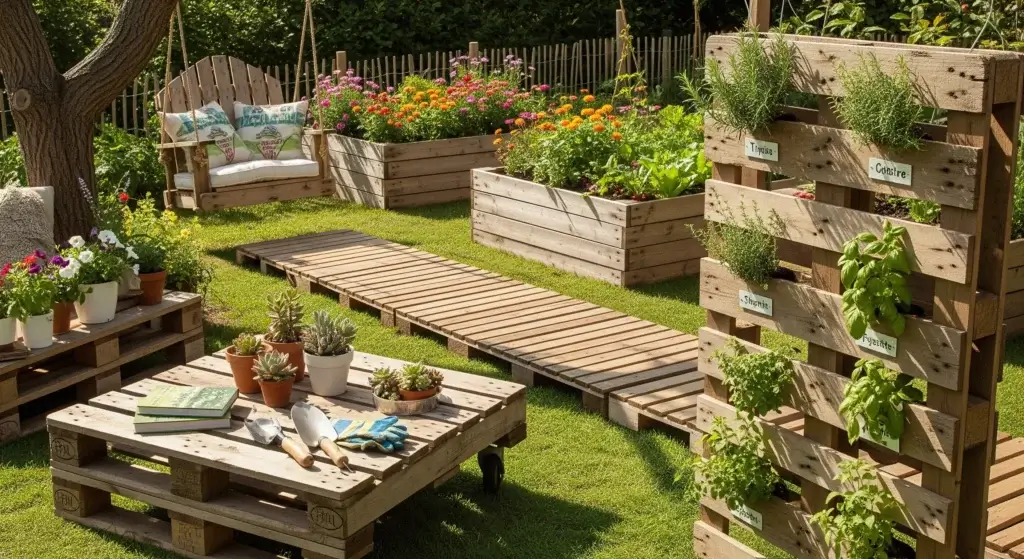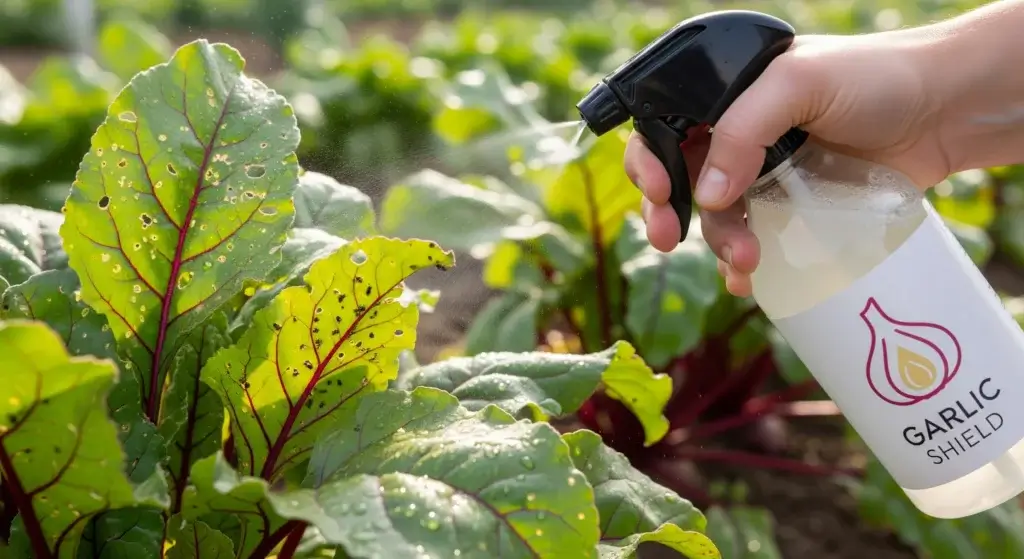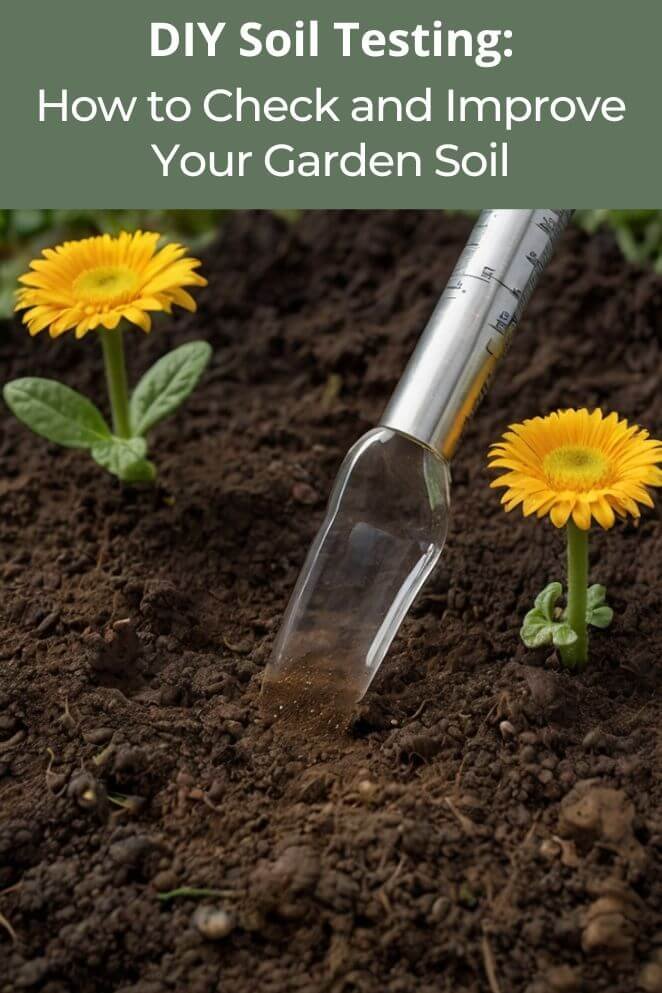
Want your garden to glow up like a plant influencer’s Insta feed? It all starts with your soil.
If your dirt’s not right, your plants won’t thrive—no matter how much you talk to them like they’re your plant babies.
The good news? You don’t need to be a scientist or spend big bucks.
With a few easy DIY tricks (think: jar tests and vinegar fizz tests), you can figure out what your soil needs—right from your backyard.
This guide gives you the lowdown on:
- How to test your soil (without turning your kitchen into a lab)
- What the results mean (no confusing jargon, promise)
- How to fix your soil so your garden grows like it’s on miracle mode
Basically, you’ll become the soil whisperer your plants deserve. Let’s get that garden thriving—one scoop of dirt at a time.
Why Soil Testing Matters
Before you grab your shovel and go full plant-parent mode, let’s talk about why soil testing is kind of a big deal.
Here’s what testing your dirt actually does for you:
- Checks your pH – Think of pH like your soil’s mood. Too acidic or too basic? Your plants won’t vibe with it.
- Spots nutrient drama – Missing nitrogen or potassium? Your plants are basically on a bad diet. Soil tests help you feed them right.
- Saves cash – Skip the guesswork and stop dumping random fertilizers. Your wallet and the planet will thank you.
- Boosts plant health – Healthier soil = stronger plants = fewer sad, droopy leaves.
- Helps you pick the right fixes – Clay, sand, or Goldilocks soil? Testing tells you what you’re working with, so you don’t waste time with the wrong stuff.
BTW, the soil nerds at UMass Amherst say testing every 2–3 years is the secret to long-term garden greatness.
So yeah, even plants need a regular check-up.
Test your soil—it’s like giving your garden a wellness plan.
- Read also: DIY Plant Watering System: Keep Your Plants Hydrated
- Read also: Nurturing Greenery: A Guide to DIY Plant Watering Globes
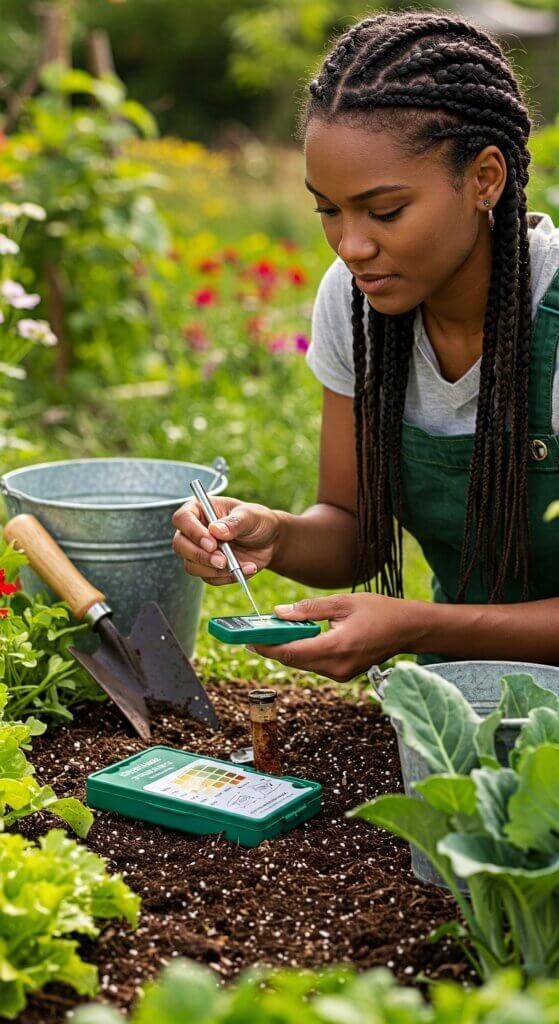
DIY Soil Testing Methods You Can Try at Home
You don’t need a PhD or Tony Stark’s lab to test your soil.
Just grab some household stuff, channel your inner plant detective, and let’s go full MythBusters on your garden dirt.
1. The jar soil texture test
Want to know if you’ve got sandy, sticky, or just-right soil?
This test’s like a dirt version of a frappuccino—watch it settle into layers.
What to do:
- Scoop up 1 cup of soil from about 6–8 inches deep.
- Pick out rocks, roots, and random gunk.
- Fill a clear jar halfway with the soil.
- Add water and a few drops of dish soap (yep, the same one you use on dishes).
- Shake it like a Polaroid picture. Then let it sit for 24 hours.
What you’ll see:
- Sand sinks fast and chills at the bottom.
- Silt hangs out in the middle.
- Clay floats up top like it owns the place.
If all three layers are kinda even, congrats—you’ve got loam, the Beyoncé of soil types.
2. DIY pH test using vinegar and baking soda
Plants are picky about their pH.
Most like it slightly acidic, like your favorite hot take.
To check if it’s alkaline (basic):
- Put a spoonful of soil in a bowl.
- Add vinegar.
- Fizz = alkaline. Basically, your dirt’s acting like soda.
To check for acidity:
- Make a muddy paste with your soil and water.
- Sprinkle on baking soda.
- Fizz = acidic. Your soil’s spicy.
It’s not super precise, but hey, neither is trying to microwave popcorn without burning it.
3. The worm count test
Earthworms = soil MVPs. If you see them, your garden’s basically at a spa retreat.
What to do:
- Dig a square hole, about 1 foot wide and 6 inches deep.
- Look through the soil like you’re hunting for buried treasure.
- Count those wigglers.
10+ worms = thriving soil party
Less than 3 = ghost town. Might need compost or organic matter to bring it back to life.
4. Drainage test
Good soil knows how to drain—too fast or too slow, and your plants throw tantrums.
Here’s how to test it:
- Dig a 1-foot deep hole.
- Fill it with water. Let it drain.
- Fill it again and time how long it takes.
If it drains 1–2 inches per hour, you’re golden.
Drains super fast = sandy soil, like a beach towel.
Drains slow AF = clay soil, like soggy bread.
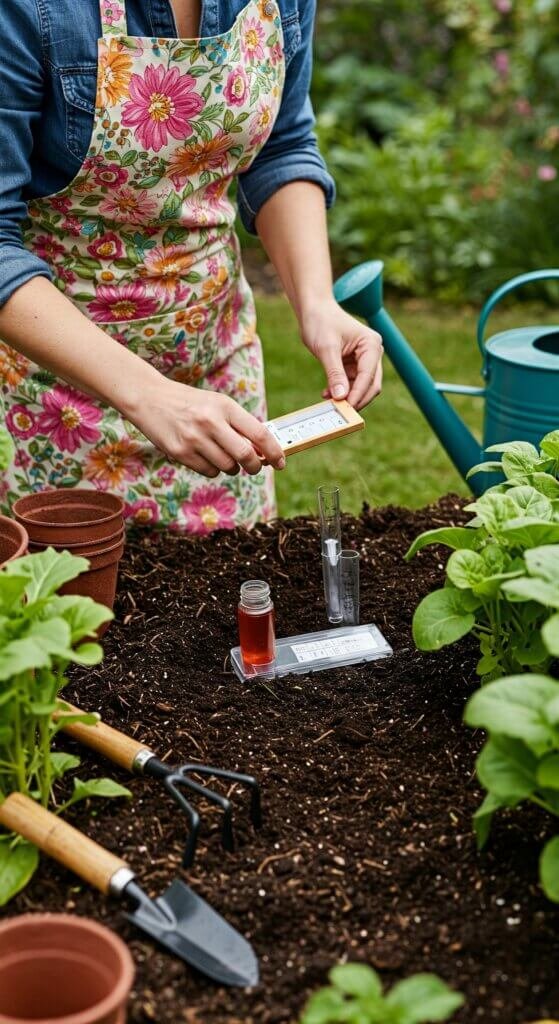
Understanding Your Results
Once you’ve tested your soil, here’s how to interpret what it means and what actions to take:
Common soil types:
| Soil Type | Characteristics | What to Do |
| Sandy | Drains quickly, poor in nutrients |
Add compost, organic matter
|
| Clay | Holds water, compacted |
Add gypsum, organic matter
|
| Silt | Smooth texture, fertile |
Ensure good drainage
|
| Loam | Balanced mix, ideal for plants |
Maintain with compost
|
pH interpretation
| pH Level | Soil Condition | Solution |
| < 6.0 | Too acidic | Add lime |
| 6.0–7.0 | Ideal range |
Maintain organic matter
|
| > 7.0 | Too alkaline |
Add sulfur or peat moss
|
How to Improve Garden Soil Naturally
So, your soil’s been tested and diagnosed.
Maybe it’s moody, maybe it’s dry, maybe it’s clingy like clay—no judgment.
Let’s help it level up naturally without breaking the bank or going full mad scientist.
1. Add organic matter
Think of compost and worm poop (yep, castings) as your soil’s green smoothie.
Toss in:
- Compost (kitchen scraps turned gold)
- Worm castings (tiny but mighty)
- Well-aged manure (no, not fresh poop… unless you like killing plants)
- Leaf mold (rotted leaves = forest magic)
These goodies feed the microbes, make soil fluffier, and help it hold water like a champion.
2. Use cover crops
Also called “green manure” because they look boring but do everything.
Try clover, rye, or vetch. They:
- Lock down your soil so it doesn’t blow away
- Add nitrogen naturally (thanks, science)
- Make the dirt easier to dig come spring
Just chop ’em and drop ’em before you plant veggies. No drama.
3. Mulch wisely
Mulch is like a cozy weighted blanket for your plants.
Use stuff like:
- Straw
- Wood chips
- Shredded leaves
It keeps weeds out, moisture in, and breaks down into yummy nutrients over time.
But PSA: don’t smother your plants—leave 2–3 inches of breathing room around stems or you’ll cause “plant pit stains” (aka rot).
4. Rotate crops
Don’t plant tomatoes in the same spot every year. They will get grumpy. Mix it up like a playlist.
Crop rotation:
- Prevents nutrient burnout
- Confuses pests like a plot twist
- Keeps your soil vibing with diversity
5. Apply natural soil amendments
Fix your soil like a pro gamer adjusting their settings:
- Got acidic soil? Toss in lime.
- Too alkaline? Add sulfur (like, plant-friendly sulfur, not demon-summoning kind).
- Lacking phosphorus? Sprinkle some bone meal.
- Low on potassium? Greensand or kelp meal is your jam.
Bonus tip: Re-test your soil every 6–12 months to see if your glow-up is working. Plants love attention.
Environmental Benefits of DIY Soil Testing
So yeah, testing your soil isn’t just for getting that perfect tomato or flexing your flower game on Insta—it’s also major eco-hero behavior.
Like, Captain Planet would be proud.
Here’s how your dirt obsession helps Earth:
- Less chemical runoff: No more fertilizers crashing into rivers like they’re in Fast & Furious. You only use what’s needed—no more, no less.
- Less synthetic junk: When you know what your soil actually wants, you stop dumping random chemicals like it’s a science fair gone wrong.
- Carbon capture queen: Healthy soil acts like a sponge for carbon. That’s right—your compost pile is low-key fighting climate change. Slay.
Even the UN’s Food and Agriculture Organization says healthy soil is a game-changer for climate and food security. So yeah, you’re kind of a big deal.
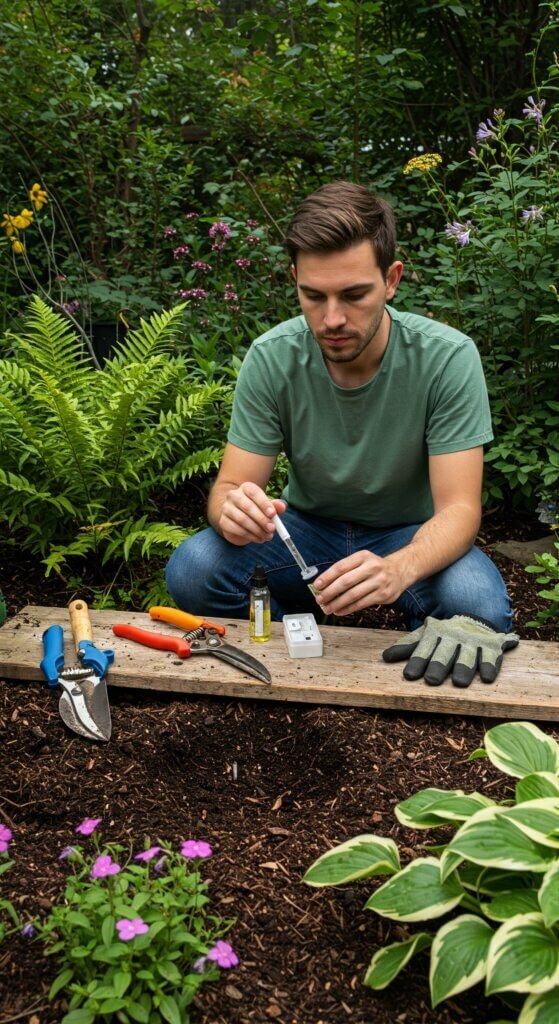
Tools & Kits for Better Soil Testing
Wanna go full CSI: Garden Edition? DIY soil tests are cool, but if you want real receipts on what’s happening in your dirt, grab one of these wallet-friendly kits (no need to sell a kidney).
Best soil test kits under $30
Luster Leaf 1601 Rapitest Kit
OG garden kit vibes. Tests pH, nitrogen, phosphorus, and potassium.
Basically the soil version of a personality quiz.
MySoil Test Kit
Super easy. You scoop, mail it off, and boom—lab-level results in your inbox.
Like sending your soil to Harvard.
Sonkir Soil pH Meter
No mess, no stress. Stick it in the dirt and it tells you the pH and how thirsty your plants are.
It’s like a mood ring for your garden.
These kits often test pH, nitrogen, phosphorus, and potassium—and many offer mailed lab analysis.
- Read also: Crafting Green Havens: DIY Garden Bed Ideas for Every Gardener
- Read also: A Step-by-Step Guide to Crafting Your Own DIY Plant Terrarium
Conclusion: Dig Deeper for Garden Success
Want a garden that’s basically the Avengers of plants? Start with your soil—it’s like the secret origin story nobody talks about.
Test your dirt DIY-style (no lab coat needed!) to figure out what your plants really want.
Good soil = happy plants, epic harvests, and less drama than a reality show reunion. Plus, it’s cheap and easy—no wizardry required.
So get your hands dirty and turn that patch of earth into a green superstar!
